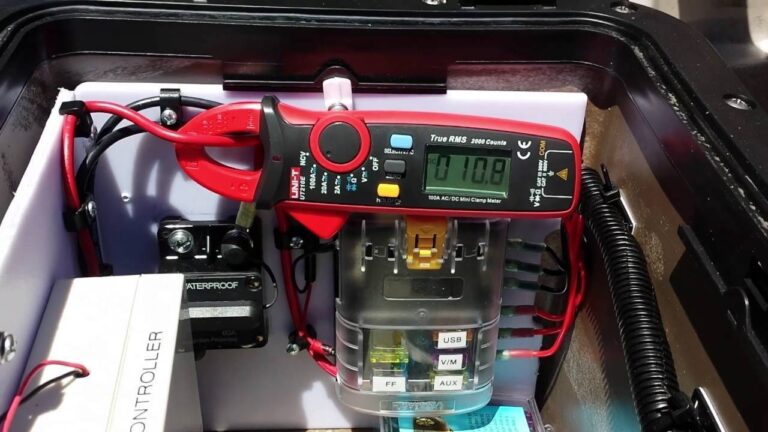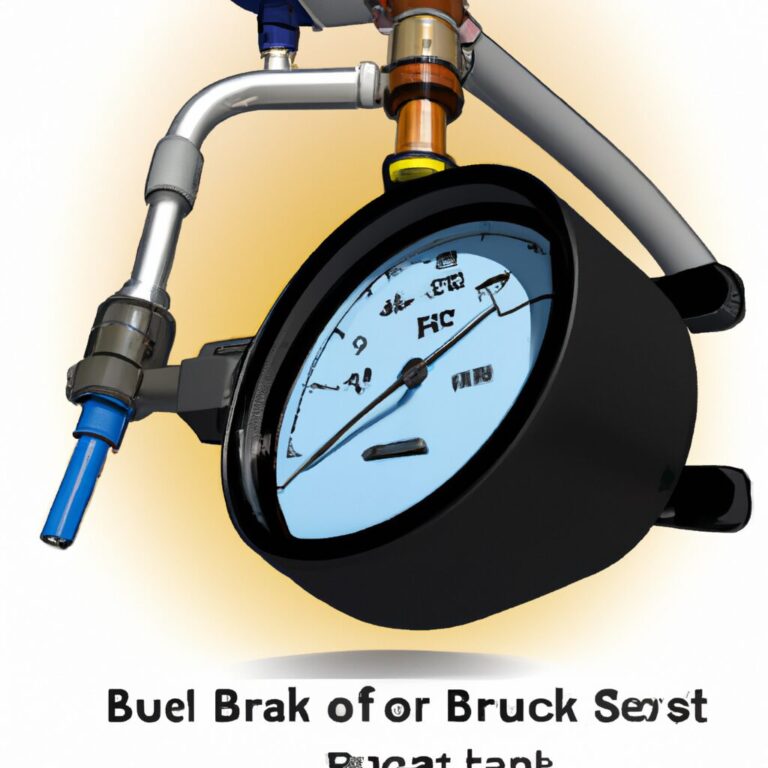How to Test Spark Plugs
To test spark plugs, start by removing the plugs, inspecting for wear or damage, using a spark plug tester to check for spark, and replacing if necessary. Spark plugs are a crucial component in your engine’s ignition system, responsible for igniting the fuel-air mixture.
Over time, spark plugs may wear out or become faulty, leading to poor engine performance. Regularly testing your spark plugs ensures they are in good condition and helps maintain optimal engine efficiency. By following a few simple steps, you can determine if your spark plugs are functioning properly and take action to replace them when needed.
Regular maintenance of spark plugs is key to keeping your engine running smoothly and efficiently.
Why Test Spark Plugs
Spark plugs play a crucial role in the ignition process of gasoline-powered engines. These small components create the spark that ignites the air-fuel mixture, keeping your engine running smoothly. However, over time, spark plugs can wear out, leading to various issues that can affect your car’s performance. That’s why it’s essential to test spark plugs regularly to ensure they are functioning optimally.
Detecting Potential Problems
Testing spark plugs allows you to identify potential issues early on, preventing more significant problems down the line. By inspecting spark plugs for signs of wear, such as erosion or carbon deposits, you can catch issues like misfiring, rough idling, and poor acceleration before they worsen.
Improving Engine Performance
Regular testing of spark plugs helps maintain optimal engine performance. When spark plugs are in good condition, they ensure efficient combustion, leading to better fuel efficiency and smoother engine operation. By testing and replacing worn-out spark plugs, you can enhance your car’s overall performance and prolong the lifespan of its engine.

Credit: www.youtube.com
When To Test Spark Plugs
Keeping your spark plugs in optimal condition is key to ensuring your vehicle runs smoothly. Testing your spark plugs at the right time can help prevent potential issues and save you from costly repairs down the road.
Mileage Or Time Intervals
Testing spark plugs based on mileage is essential to maintain engine performance and fuel efficiency. Generally, it’s recommended to test spark plugs every 30,000 miles.Regular maintenance is crucial to prevent ignition problems.
Signs Of Spark Plug Issues
Recognizing signs of spark plug issues is vital to know when to perform tests. Look out for symptoms such as rough idling, poor acceleration, and increased fuel consumption. These indicate potential spark plug problems.
Tools Needed For Testing
To properly test spark plugs, you will need the following essential tools:
Spark Plug Socket
A spark plug socket is a specialized tool that allows you to safely remove and install spark plugs in your vehicle.
Gap Gauge
A gap gauge is used to measure and adjust the gap between the center and ground electrodes of the spark plug. This ensures optimal performance.
Ignition Tester
An ignition tester helps you determine if the spark plug is generating the necessary spark to ignite the air-fuel mixture in the engine.

Credit: m.youtube.com
Step-by-step Guide
When it comes to maintaining your vehicle, testing spark plugs is an essential task to ensure optimal engine performance. Whether you’re experiencing rough idling, poor acceleration, or decreased fuel efficiency, diagnosing faulty spark plugs is a crucial step. To assist you in this process, we’ve prepared a step-by-step guide to effectively test and maintain your spark plugs.
Gather Materials And Safety Precautions
Before you begin, gather the necessary materials for safe and efficient spark plug testing. You will require safety goggles, insulated pliers, a ratchet, a spark plug socket, and a spark plug gap gauge. Additionally, ensure that the engine is cooled to prevent any burns during inspection. Safety precautions such as wearing protective gloves and disconnecting the battery should also be followed to avoid any accidents.
Locate And Remove Spark Plugs
First, identify the location of the spark plugs in your vehicle. Once located, carefully remove the spark plug wires using insulated pliers to prevent electrical shock. Utilize a ratchet and spark plug socket to loosen and remove the spark plugs from the engine. Take note of any signs of damage, wear, or debris accumulation as you remove the plugs.
Inspect And Clean Spark Plugs
After removing the spark plugs, carefully inspect each one for fouling, corrosion, or carbon buildup. Clean the spark plugs using a wire brush and a suitable solvent to remove deposits and ensure optimal performance. Additionally, use a spark plug gap gauge to measure the electrode gap and adjust it according to the manufacturer’s specifications if necessary.
Testing The Spark Plugs
Once the spark plugs are clean and properly gapped, it’s time to test them for functionality. Connect the spark plug wire to the plug and ground the electrode against the engine block. Crank the engine and observe the spark plug for a consistent and strong spark. If the spark appears weak or inconsistent, it may indicate a faulty spark plug that requires replacement.
Replacing And Reinstalling Spark Plugs
If testing reveals a faulty spark plug, it’s crucial to replace it with a new one of the appropriate heat range and specifications. Carefully reinstall the spark plugs, ensuring they are tightened to the manufacturer’s recommended torque. Reattach the spark plug wires, making sure they are securely connected to each plug. Finally, reconnect the battery and conduct a test run to verify that your vehicle’s performance has improved.
Common Spark Plug Issues
Spark plugs are a vital component of your vehicle’s engine, playing a crucial role in igniting the air-fuel mixture that powers your car. However, like any part, spark plugs can experience issues over time. By knowing how to identify and test these common problems, you can ensure your spark plugs are functioning optimally and your engine is running smoothly.
Fouling
Spark plug fouling occurs when deposits build up on the plug’s electrodes, hindering their ability to produce a strong spark. This can happen due to various reasons, including an excessively rich air-fuel mixture, oil leakage into the combustion chamber, or frequent short trips that prevent the engine from reaching its operating temperature.
If your spark plugs are fouled, you may experience symptoms such as rough idling, decreased fuel economy, or difficulty starting your vehicle. To test for fouling, visually inspect the spark plug electrodes for carbon deposits or oil residue. You can also use a spark plug tester or a multimeter to check for a weak or no spark. If fouling is detected, it’s important to clean or replace the spark plugs to restore proper engine performance and fuel efficiency.
Overheating
Overheating is another common issue that can affect spark plugs. Excessive heat can cause the electrode tips to melt or blister, reducing their effectiveness in igniting the air-fuel mixture. This can occur due to extended engine operation at high speeds or under heavy loads, inadequate cooling system maintenance, or incorrect spark plug heat range for the engine.
If your spark plugs are overheating, you might notice symptoms such as engine misfires, power loss, or even engine damage. To test for overheating, carefully remove the spark plugs and inspect the electrode tips. Look for signs of melting, blistering, or any unusual discoloration. Additionally, ensure that the cooling system is functioning properly and that you are using the correct spark plugs recommended by the manufacturer.
Wear And Tear
As with any mechanical component, wear and tear are inevitable for spark plugs. Continuous exposure to high temperatures and combustion forces can cause the electrodes to erode or wear down over time. This can lead to reduced spark intensity and overall engine performance.
To test for wear and tear, visually examine the spark plug electrodes for signs of erosion, pitting, or rounded edges. You can also use a wire feeler gauge to measure the electrode gap and compare it to the manufacturer’s specifications. If wear and tear are detected, it is important to replace the spark plugs to ensure optimal engine performance and prevent potential issues down the line.

Credit: west-equip.com
Frequently Asked Questions Of How To Test Spark Plugs
How Can You Tell If A Spark Plug Is Bad?
To determine if a spark plug is faulty, look for signs like rough idling, misfiring, difficulty starting the engine, decreased fuel efficiency, or a lack of acceleration. Additionally, inspect the spark plug for damage, such as worn electrodes or a buildup of deposits.
How Can You Test If A Spark Plug Is Good?
To test if a spark plug is good, remove it and inspect the electrode for wear or damage. Then, use a spark plug tester to check for a strong, blue spark when the engine is cranked. If the spark is weak or absent, the plug may need to be replaced.
Can I Check My Own Spark Plugs?
Yes, you can check your own spark plugs. Simply locate them, remove one at a time, inspect for wear and deposits, then replace as needed.
How Do I Know When My Spark Plugs Need Replacing?
You’ll notice rough idling, poor acceleration, or decreased fuel efficiency when spark plugs need replacing. Regular maintenance checks are crucial.
How Often Should I Test My Spark Plugs?
Regularly testing your spark plugs every 30,000 to 50,000 miles ensures optimal performance and fuel efficiency.
What Are The Signs Of Worn-out Spark Plugs?
Common signs include misfiring, difficulty starting the engine, reduced fuel efficiency, and engine surging or hesitation.
Can I Test Spark Plugs Without Removing Them?
Yes, you can visually inspect your spark plugs by removing the ignition coil and examining their condition.
Conclusion
Testing spark plugs is crucial for your vehicle’s performance. By following the simple steps outlined in this post, you can assess the condition of your spark plugs and ensure efficient combustion. Regular checks will help prevent engine issues and improve fuel economy, keeping your vehicle running smoothly.




